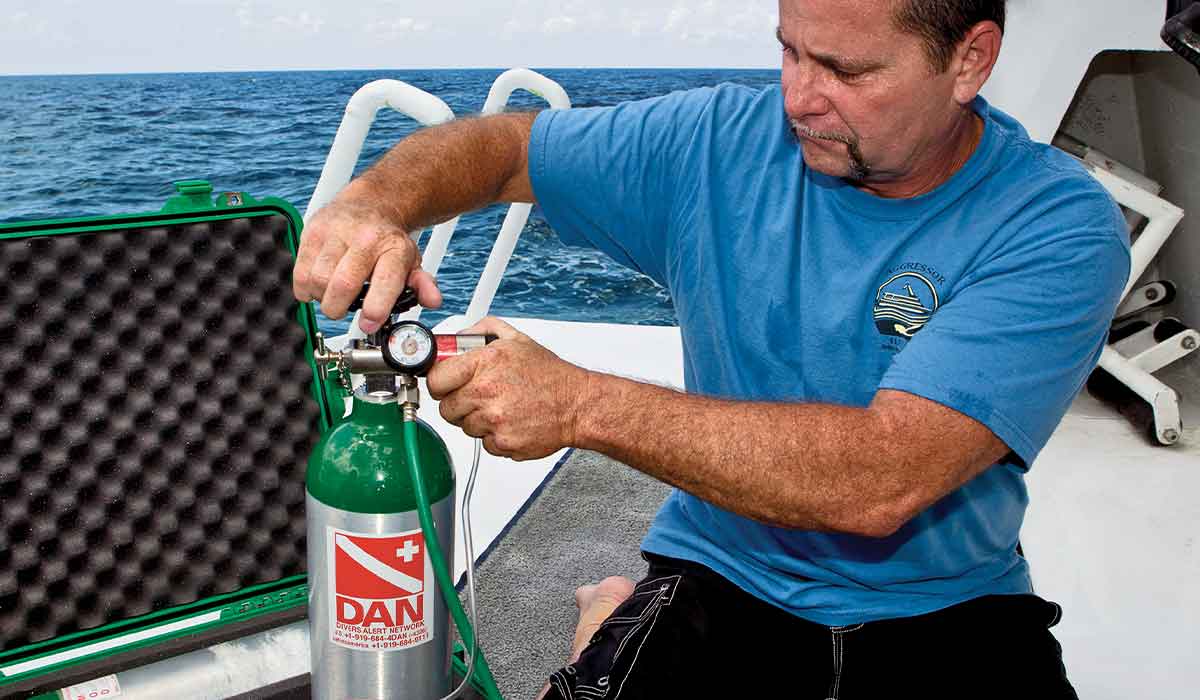Supposed a diver in a remote location was suffering from a decompression Illness and all you had available was industrial oxygen... could you, should you, would you administer it to the diver?
Discuss.
Not yet I wouldn't. Your prime purpose would be to decide first the symptoms in order to ascertain an appropriate treatment and for that you need to first to access which of the two categories your diver is suffering.
Either its a Type 1 or Type 2 bend having first discarded the usual sprains and bruises etc.
If however the signs are pretty obvious for a serious type 2 then your oxygen cylinder will be of little use and I would suggest Valium as a better alternative with morphine for the final back up support.
If a mild type 2 then your oxygen would be most beneficial if its volume is sufficient to provided say 40 LPM at an elevated RMV (repetitive minute volume) until the Valium kick's in for the trip back.
I would also assume by now you have recovered all the divers out the water and be making your way back to your home port while the local recompression chamber and transport would be waiting at your remote location to receive the patient.
I trust by now you can see that the quality of the oxygen administered has no consequence to a successful outcome.
And bears testament to sound planning for remote diving and serious consideration in having a small transportable recompression chamber on board. Where with a mild type 1 bend the treatment is over before you arrive back at port and even on the most serious type 2 you have the diver under pressure within 3 minutes of him/her arriving on deck.
Around 40% of bends manifest in around an hour and 60% within 3 hours
with 98% within 25 hours
Most bends are treated well with a recompression chamber but the time taken to get there is the problem I have only seen a couple of folk die while in a chamber, another guy died before he got in,
all had a long ride to the chamber from the dive site, A couple of folk I knew have been paralysed one in particular on the RMS Lusitania told me he lay on the deck for 20 minutes waiting for the helicopter by then he felt his legs had gone. We spoke only a couple of weeks before about a small chamber 200Kg and the price of a reasonable family car. A little, too little too late.
Oxygen helps but is of little benefit on its own, by the time you are using it in anger no one cares if it's industrial or not. Iain




